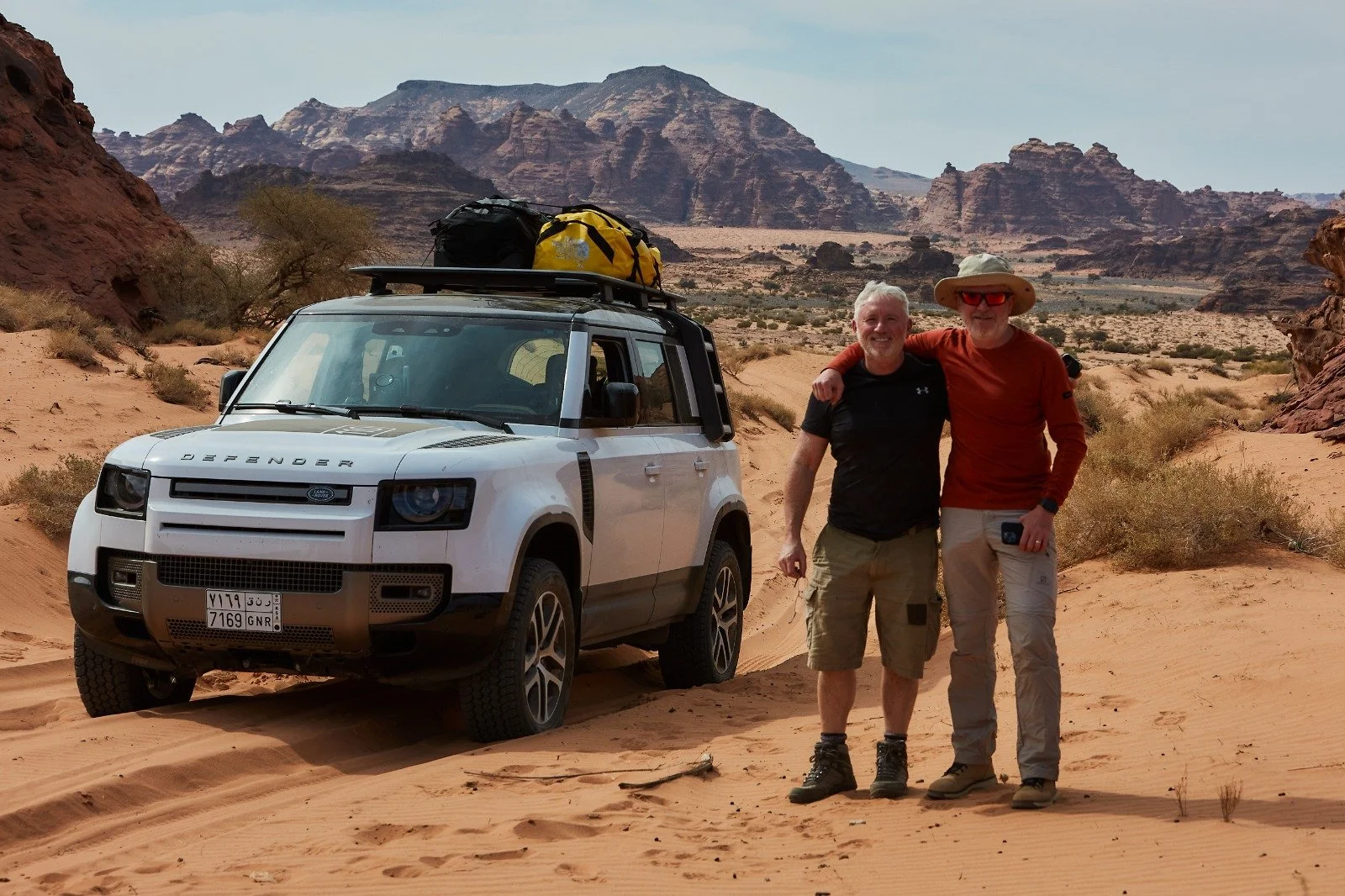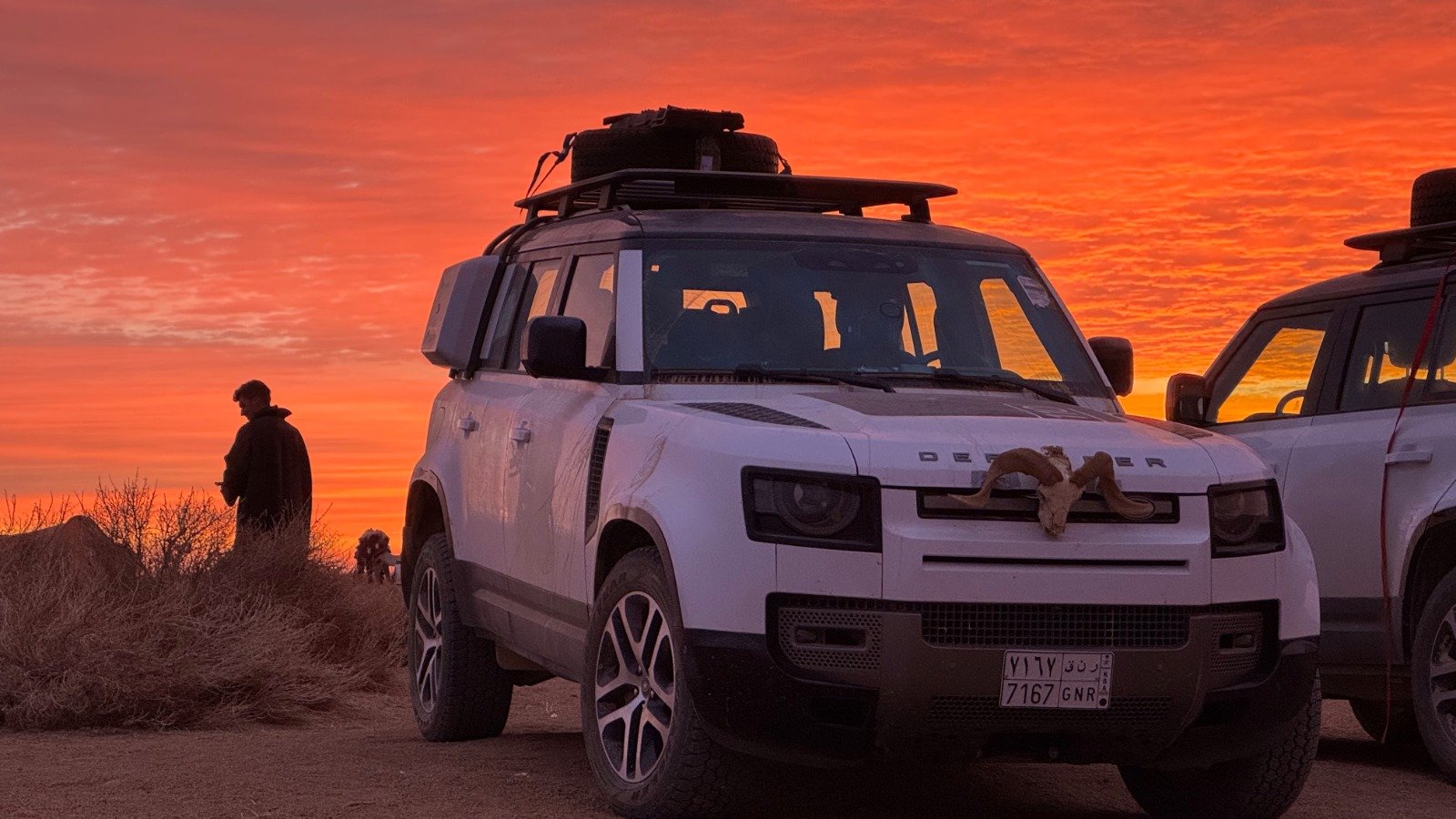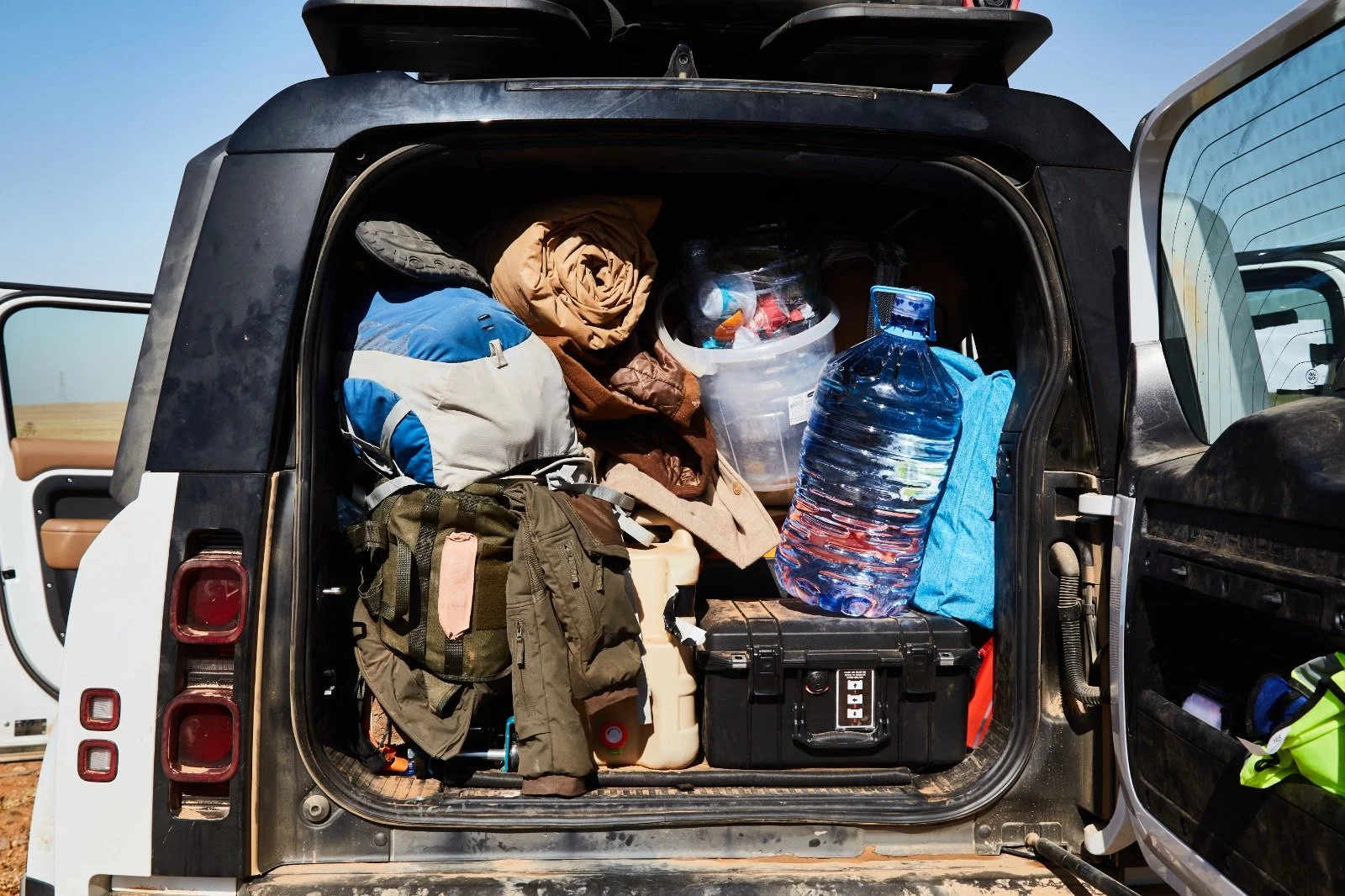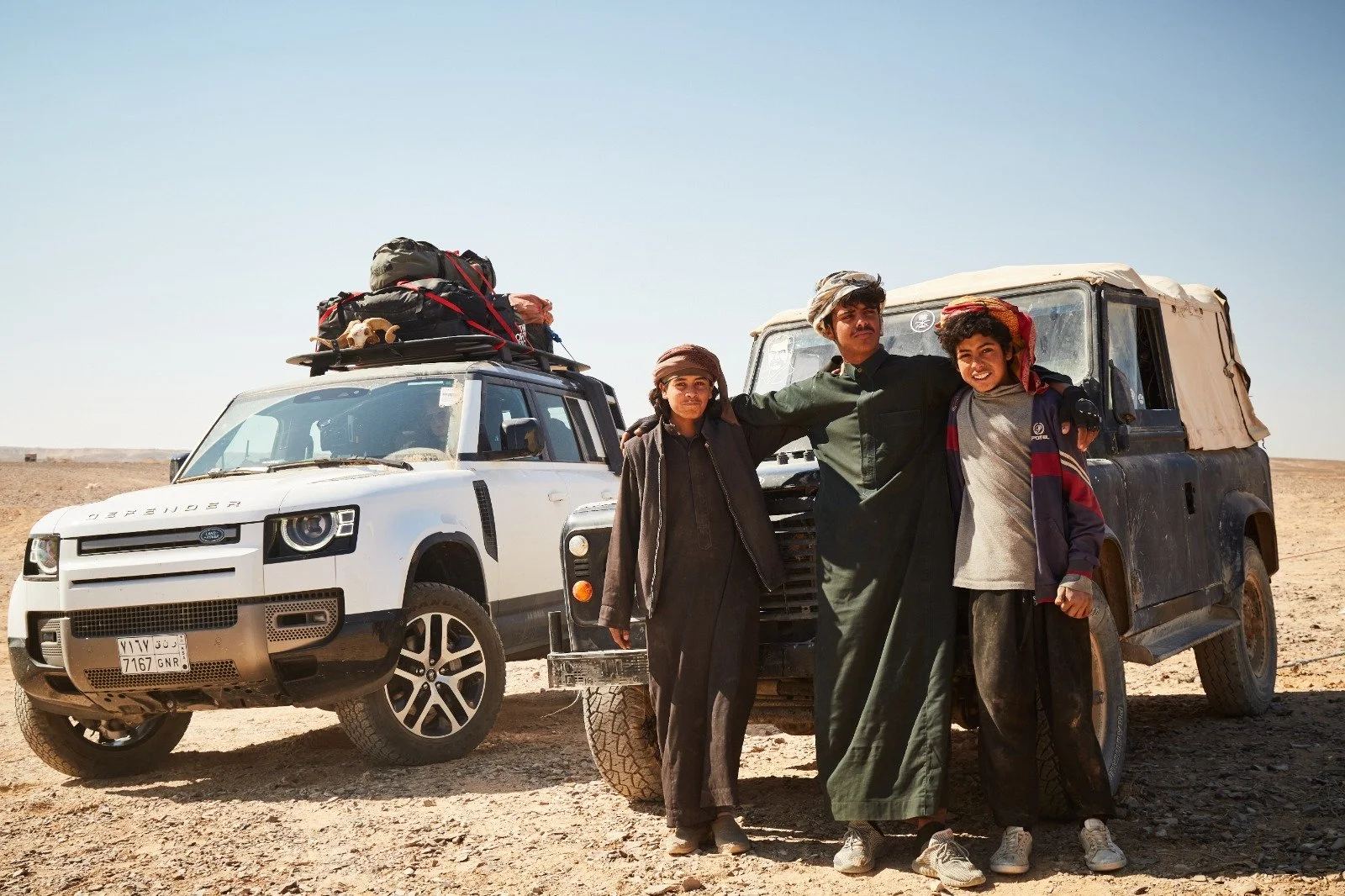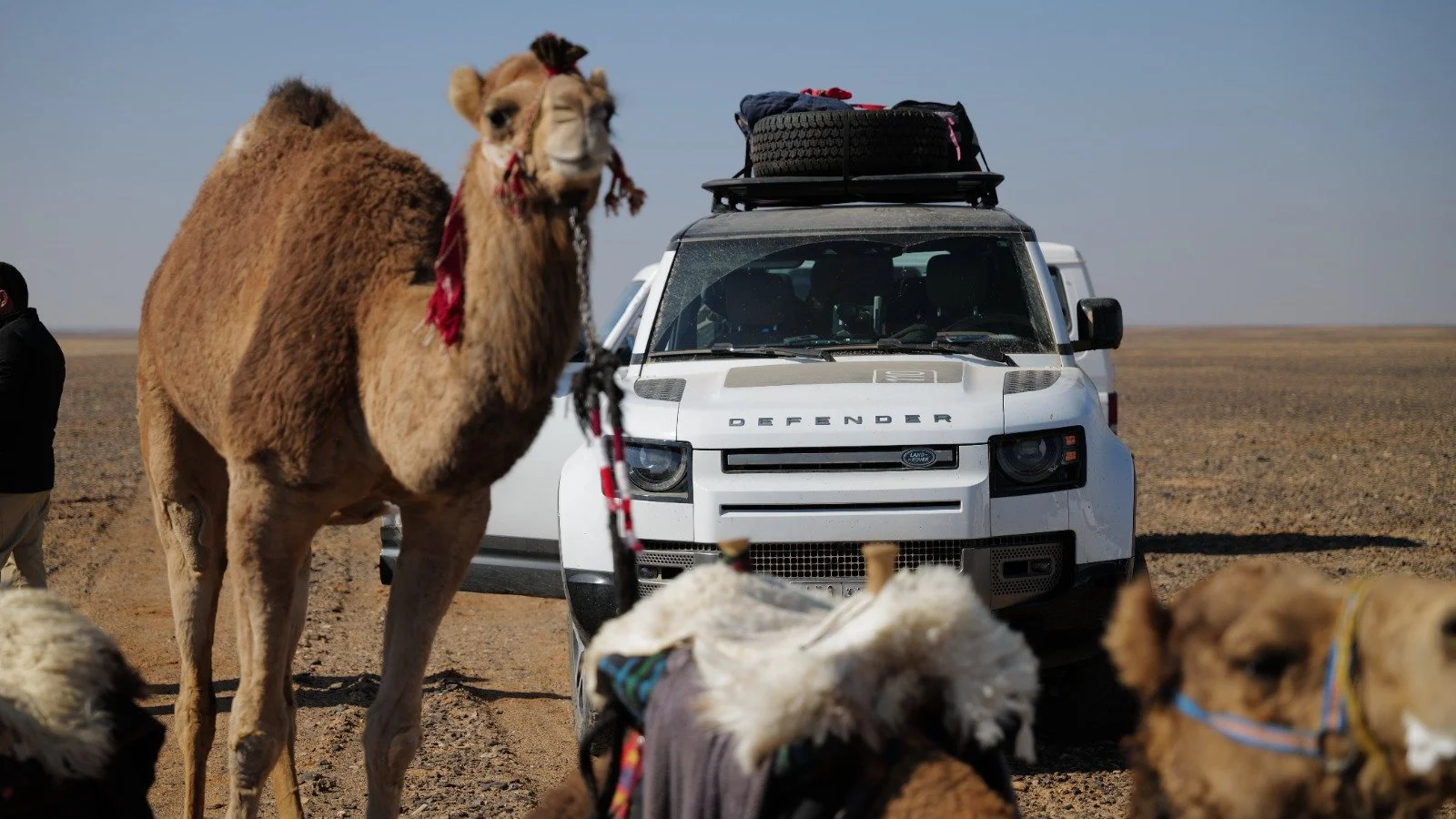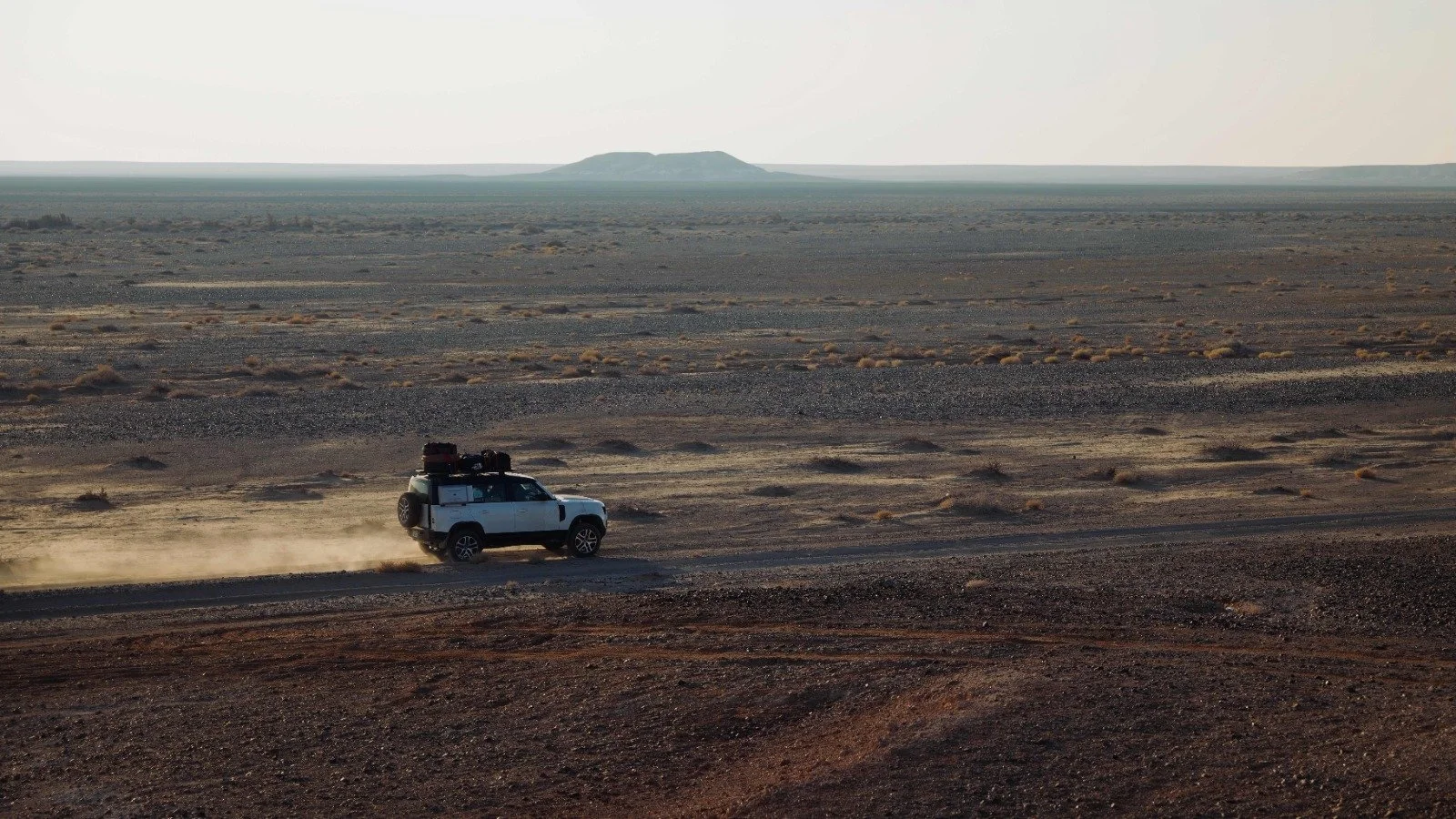
By Richard B (Driver and comms specialist)
DEFENDERS OF THE TREK
In November 2024, Jaguar Land Rover (JLR) launched its bold “Copy Nothing” campaign, seeking to reposition the brand for a younger, more progressive audience. Featuring striking imagery – but notably no cars – the campaign sparked immediate media controversy, drawing criticism as “woke” and triggering backlash from both the public and politicians.
What many critics failed to notice, however, was that just weeks earlier JLR had quietly committed its support to the Special Forces Club Benevolent Fund’s Nasir, Bekri, Tayi and Lawrence Tribute Trek. This pledge included the provision of at least four brand-new Defender 110 vehicles to support Special Forces Club riders in their attempt to complete the first-ever full re-enactment of Lawrence’s historic 1,100 km “Path to Aqaba”, and some of the toughest desert Saudi and Jordan could offer. Hence, at a time when other manufacturers hesitated, JLR stepped forward, aligning itself with its own proud heritage of rugged utility and military service dating back to the earliest Defenders.
Where the ad campaign risked alienating some of the brand’s loyal base, JLR’s backing of the SFCBF quietly reaffirmed its connection to values of courage, resilience, service, charity and tradition; qualities long associated with Land Rover.
This is the story of our Defenders.
Into the Desert
Our expedition began not with a roar across the Saudi dunes, but in a classroom in the UAE. Before releasing the keys to the Defenders, JLR’s Middle East Academy instructors spent three days turning our mixed bunch of ex-soldiers and ex-spooks into something approaching a desert driving team. (They succeeded remarkably quickly, given what they had to work with.)
In two Defender 110s and a longer 130 version, we learned how to read and drive the sand: spotting the subtle signs that betray softness or crust; understanding how wind shapes dunes; and most importantly, how to crest them without turning a 2.5-tonne vehicle into an expensive cartwheel.
We started with the basics. Lower the tyre pressures; trust the Defender’s electronics; drive smoothly; and under no circumstances spin the wheels – advice that some of us adhered to more successfully than others. Recovery drills were practised until they were almost muscle memory: dig, mat, drive, repeat. Attach a towrope, move, stop, repeat. (If nothing else, we all left Dubai with enviably toned shoulders.)
By the time we arrived in Saudi, four gleaming white Defender 110s – factory fresh at the Jeddah dealership - were readied as working expedition trucks. Out went the nice floormats and bits of plastic trim. On went the spare tyres and all the kit. So much kit. Enough, in fact, that our convoy looked less like a tribute to Lawrence and more like a mobile branch of Decathlon.
The Team Behind the Riders
While four riders took on the full endurance challenge astride camels - an experience somewhere between meditative and mildly masochistic - the rest of us formed the support team: drivers, medics, cooks, logisticians and camel wranglers. Our team became the circulatory system of the expedition, moving food, water, tents, and fuel through hundreds of kilometres of sand, heat and isolation.
By day we lived in the Defenders. They carried our gear, our supplies, and provided our shade. When you spend hour after hour navigating featureless terrain under an unrelenting sun, your vehicle becomes another teammate - albeit one that doesn’t complain, run out of energy bars, or ask when lunch is.
By evening we’d form a rough camp, when dark using the headlights to set up tents and the camp facilities. The camels would appear in the late afternoon or sometimes at dusk, drifting in like hairy, apathetic ghosts. The riders – parched, hungry, sore – would collapse into tents or by the fire, usually with the thousand-yard stare of people who had spent all day negotiating with an animal that fundamentally does not care for negotiation.
Driving the Defender
The Defender’s transformation from spartan military mule into a modern, electronically-savvy 4x4 divides opinion. But in the deserts of Dubai, Saudi and Jordan, the new version was superb.
Each of our four 110s had JLR’s V8 petrol engine which delivered plenty of oomph for mixed terrain. No need to bore you with fuel consumption details (clue: Saudi fuel prices meant we didn’t even flinch). They ran for hours each day, fully loaded with expedition kit, personal kit, jerrycans, tools, food and the occasional human who had lost the will to walk. Temperatures hit the 30s by day and dropped below freezing at night, yet none of the vehicles overheated, protested, or even developed a personality quirk. Even Simon’s – as the cook he towed the trailer, better known as the sand anchor.
The air suspension maybe mocked by some purists but it was great. It allowed us to glide across sand where older coil-sprung trucks might have rolled up their sleeves and dug in. Switchable off-road modes—sand, rock, mud—were genuinely useful. Terrain Response’s clever throttle and traction management meant even less experienced drivers (me) could maintain momentum without bogging down too often. “Too often” being the operative phrase.
Inside, the Defender was no stripped-down expedition wagon. The visibility was superb, the layout logical, and the comfort levels almost indecent compared to the camel riders’ wooden shadad saddles. After ten hours in the saddle, just sitting in the Defender must have felt like entering an air-conditioned hotel.
Challenges and Recoveries
No desert journey is without its drama. Ours were mostly down to “operator error” rather than equipment failure. The biggest issue was punctures. Despite all-terrain tyres with Kevlar sidewalls, we managed 15 punctures across four vehicles over the course of the expedition. With each vehicle carrying just two spares, the maths quickly became unkind.
Worse, while tyre shops abounded in the towns, unless you were running a Toyota or Nissan you were politely, consistently out of luck. Eventually, a new batch of spares was dispatched from JLR in Jeddah to one of our campsites; an impressive feat of logistics involving multiple calls, a lot of hope, and possibly some prayers.
The electronics, which many of us feared might object to constant corrugations, heat and dust, behaved well. Navigation was a greater challenge: cross-referencing GPS tracks with old Lawrence maps, which were in turn cross-referenced with updated satellite imagery that was sometimes incompatible with reality on the ground. And then there were the farms; vast circular fields with impenetrable fencing, randomly appearing like agricultural boss fights. Ugh.
Living History
Retracing the route of Lawrence’s 1917 campaign was as much an act of acknowledgement as adventure. Each day took us through landscapes Lawrence himself would still recognise – wadis that once hid Arab Revolt fighters, sandstone outcrops where their campfires glowed.
From the support vehicles, we watched the riders move across the horizon – slow, deliberate, wonderfully stubborn (the camels). It was easy to forget we were surrounded by modern technology: satellites, air-conditioned cabins, electronic differentials. The contrast was thought-provoking, especially when watching a camel refuse to go in the direction its rider wanted, despite several millennia of practice.
At Aqaba, where Lawrence’s force famously captured the Ottoman garrison, we arrived dusty, sun-kissed, exhausted – and elated. 1,100 kilometres: Saudi Arabia to Jordan, Al Wajh to Aqaba. Job done. Across some of the gnarliest terrain in the Middle East, and alongside the ships of the desert, the Defenders had been great.
The Human Element
Expeditions are sustained by quiet teamwork. The cook (Simon) who made food appear several times a day as if by sorcery. The medic (Ged) who treated camel bites and the less glamorous consequences of long days in the saddle. The drivers and support crew (coordinated by Rory) who rotated through duties with varying degrees of enthusiasm depending on the previous night’s sleep.
There were moments of humour: an impromptu “Defender versus Camel” race (the camel won, though we maintain it jumped the start), and endless debates about tyre pressures, radio call signs, and whose playlist was least offensive to the rest of humanity. And of course, the humour from Rory and Ged in the Fun Bus.
At night, under the desert stars, conversation often turned to the Special Forces Club Benevolent Fund—the reason we were there. Knowing our effort supported those who had served, and their families, gave meaning to every blister and every sandy meal.
Reflections on the Brand
For all its marketing budgets and bold slogans, what truly defines a brand is how it behaves when no one is watching. JLR’s support spoke far louder than any marketing. Along with the vehicles came their reputation. Every dune crest, every recovery, every rough landing was a live test of design. And the vehicles didn’t let us – or JLR – down.
The Defender has come full circle. Once a symbol of post-war practicality, then a cult adventure icon, it now proves that technology and toughness can coexist. The new model honours its ancestors not by imitation, but by evolution.
Epilogue: The True Meaning of “Copy Nothing”
Perhaps it’s fitting that JLR’s “Copy Nothing” campaign coincided with this expedition. Because nothing about our journey could be copied. Each moment, each kilometre was shaped by the place, the people, and occasionally a camel with strong opinions.
In the desert, stripped of comfort and noise, slogans fade. What remains are the essentials: reliability, teamwork, trust.
The Defender embodied all of them. Through JLR, it made the expedition possible. And in doing so, it reminded us why the Land Rover legacy matters.
There were no second chances. Just the right team, the right cause, and the right vehicle. The Defender was ours.


